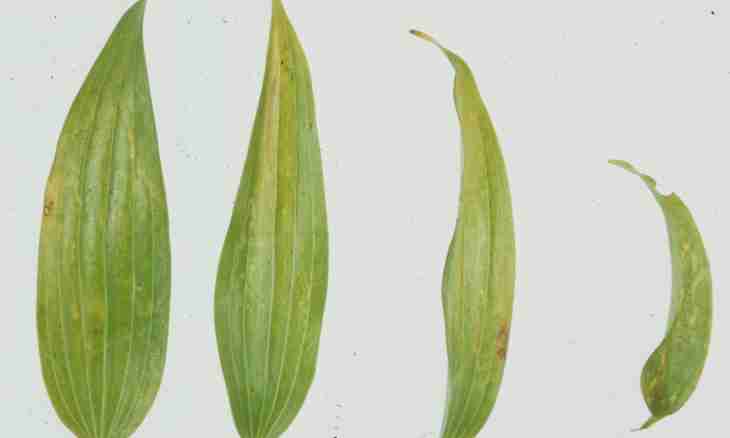The leaf is one of escape bodies. Its main functions are a photosynthesis (formation of organic matter from inorganic on light), gas exchange and evaporation of water.
Similarities and differences between leaves of different plants
Leaves of different plants can strongly differ in a form, appearance, arrangement on a stalk. Despite this, between them is much in common: the majority of leaves have green coloring and consist of a sheet plate and the scape connecting a leaf to a stalk.
Petiolar and sedentary leaves
The leaves growing on scapes are called "petiolar". They are available for an apple-tree, cherry, a birch, a maple. Leaves of some other plants, such as aloe, a flax, chicory, wheat, have no scapes, and they fasten to a stalk the bases of sheet plates. They are called "sedentary".
Form of leaves as adaptation to environmental conditions
In a form the leaves can be oval, roundish, needle (needles), heart-shaped, etc. Most often such form serves as adaptation to certain environmental conditions: so, needle leaves at coniferous plants reduce a surface of a leaf and protect a plant from excess evaporation and loss of moisture. Also edges of leaves can differ: for example, gear edge at an apple-tree, pilchaty at an aspen, smooth-edged at a lilac.
Simple and difficult leaves: in what difference?
Botanists divide leaves into simple and difficult. The simple leaves which are found at a birch, an oak, a maple, a bird cherry and other plants consist of one sheet plate. Difficult leaves are presented by several sheet plates connected by small scapes to one general scape. They can be observed at a rowan, an ash-tree, an acacia, a dogrose, haricot, a chestnut and many others.
Types of a zhilkovaniye of a leaf
Sheet plates are penetrated by the carrying-out bunches – veins. These sosudik form a strong framework of a leaf and carry out solutions of nutrients. If veins are located in parallel, speak about a parallel zhilkovaniye of a leaf. It is characteristic of many monocotyledonous plants – a rye, wheat, onions, barley and others. The arc zhilkovaniye when "parallelism" is broken is also characteristic of monocotyledonous plants and leaves are a little bent dugoobrazno (a lily of the valley, an aspidistra, a bichromatic plant – a plantain). In case of a mesh zhilkovaniye of a vein repeatedly branch and form network. Such zhilkovaniye is the most typical for bichromatic plants. But there are also exceptions: a vorony eye – a plant monocotyledonous, and veins in its leaves are located also in the form of network.
